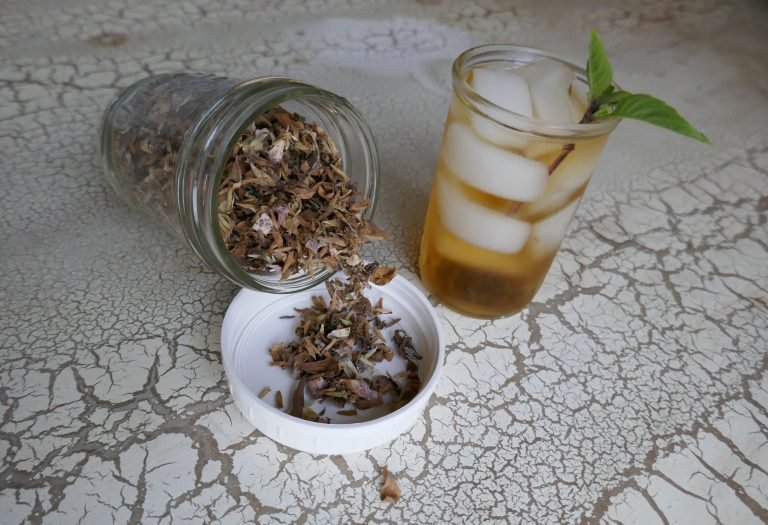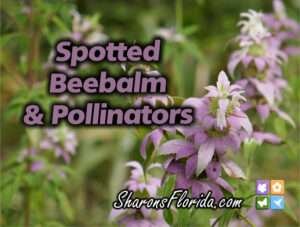Monarda punctata
(Spotted Beebalm)
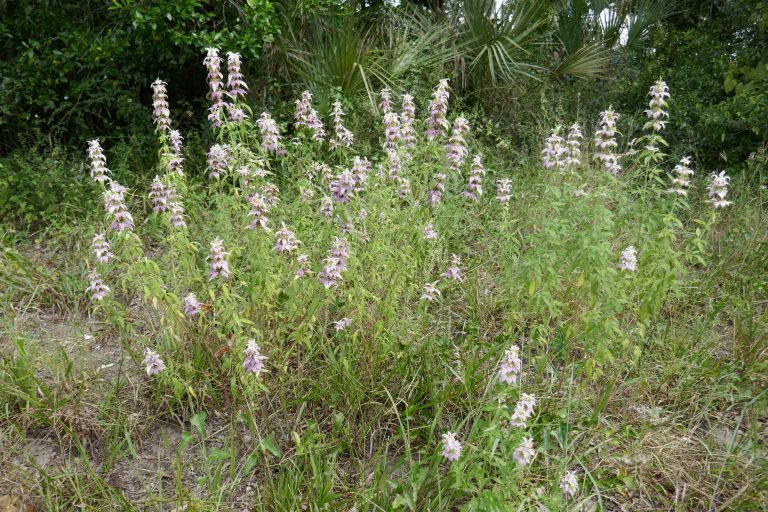
Common Names, Latin Name, and Family
Some of its common names include spotted bee balm, horsemint, dotted horsemint, dotted bee balm, and spotted horsemint.
The Latin name is Monarda punctata.
The species Monarda is named in honor of a Spanish physician, Nicolas Monardes, who wrote a medicinal plant book in 1569. The latin punctate means marked with dots.
It is found in the Lamiaceae, or mint, family.
Form
It grows to a height of about 2 to 3 feet and just about as wide.
It is considered a short lived perennial, or biennial, but it seemingly continues to propagate itself in perpetuity by runners and once established in an area it seems to continually regenerate itself.
Leaves
The leaves are opposite and shortly stalked.
The shape of the leaf is lanceolate and the leaf margins are toothed. The stem is square as they are in plants of the mint family.
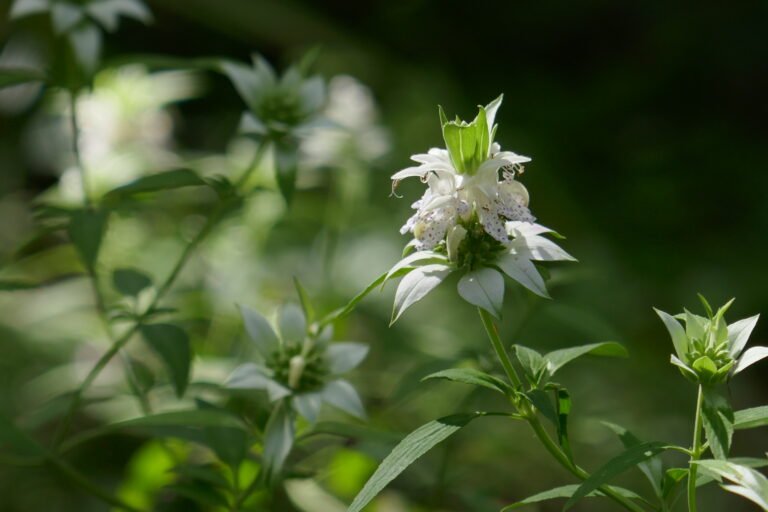
Flowers
The flowers appear in the summer and fall in Central Florida.
The flower itself is a compact cyme that consists of an abundance of closely packed tubular flowers. Each flower head is surrounded by a ring of pink leaf bracts. Some plants may have purple bracts or white bracts.
The petals, corollas, themselves are two lipped structures that are white with purple dots.
As the bloom begins to age the petals wither and fall off and the leaf bracts fade and become splotchy losing their bright pink color. Once the petals fall the tubular flowers become more visible.
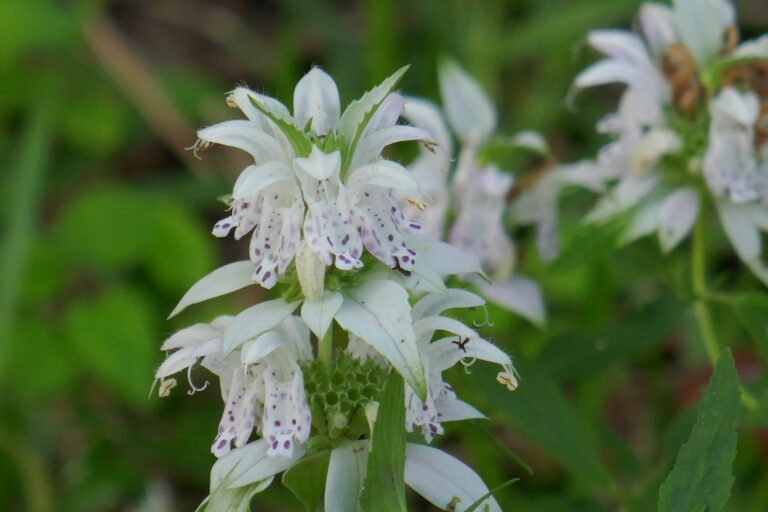
Fruit / Seeds
Once the sepals, which look like petals, start go brown and fall off the plant the flower becomes more apparent.
These small structures are where the seeds will mature.
Wait until the seed heads start to turn brown, and dry, to collect seeds.
If collected too early, while still green, they may not have had time to mature and become viable.
Habitat
In Florida it occurs naturally in dry open woods, pinelands, sandhills, roadsides and disturbed sites.
Native Range
It occurs naturally throughout Florida from the panhandle south to Collier County.
It is native to the following states: AL, AR, CA, CT, DC, DE, FL, GA, IA, IL, IN, KS, KY, LA, MA, MD, MI, MN, MO, MS, NC, NJ, NM, NY, OH, OK, PA, SC, TN, TX, VA, VT, and WI.
Its USDA hardiness zones are listed as 5 through 9.
Landscape use
Monarda punctata would be a wonderful addition to a native plant garden. It is quite a useful plant in that it has medicinal and culinary uses for humans, provides a lovely flowering plant in the landscape and provides nectar for the pollinators.
In the home landscape it grows in full sun to part shade with average to dry soils. It is drought tolerant once established. However, in early winter, or during dry months, it may need regular watering to keep the plant looking lush. Unlike the red bee balm, or common garden mints, spotted beebalm does not like wet soils.
Spotted beebalm is its most striking when planted en mass along the edges of natural areas to create large swaths of color in the fall. However just a single plant adds a bright pink color to the landscape and provides a nectar source for the bees, flies, wasps, hummingbirds and butterflies.
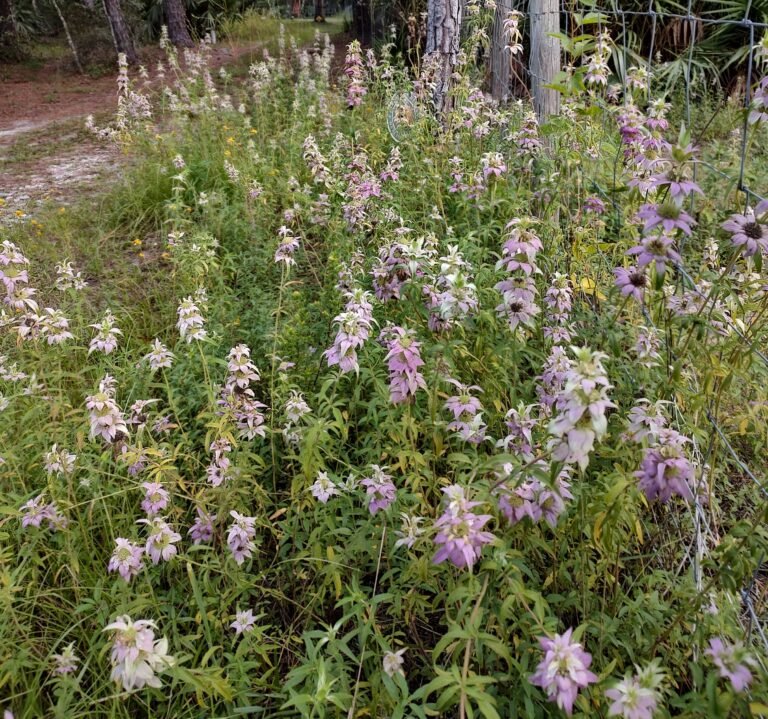
Wildlife Use
Spotted beebalm is a favorite of pollinators such as bees, flies, wasps, lovebugs, and butterflies. It is an important nectar source in the fall.
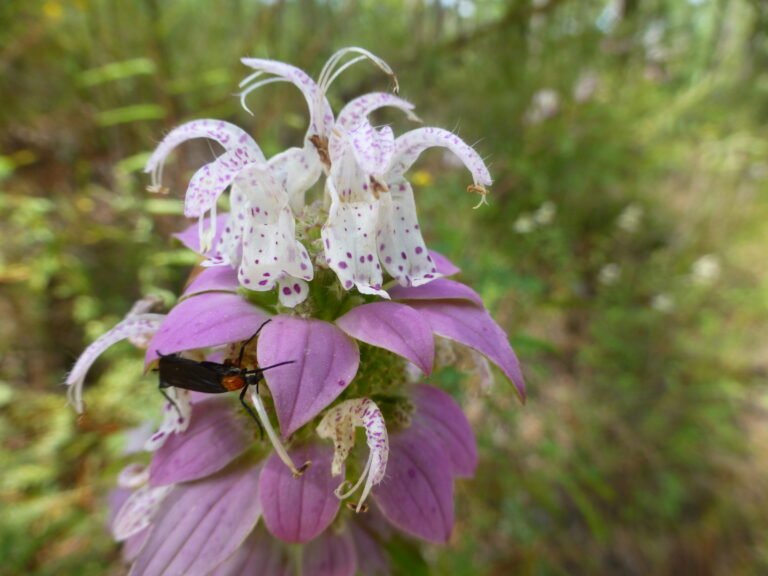
Human Use
Its fragrance is not at all like garden mints such as peppermint or spearmint. Some compare the fragrance to bergamot, but I don’t see it because bergamot is a citrus and horsemint doesn’t smell faintly citrusy to me. It has a fragrance all its own that to me smells spicy, earthy, and floral.
Spotted beebalm contains an antiseptic oil called thymol and has been used medicinally for many years. American Indians used a tea made from the leaves to treat fevers, colds, coughs and bowel ailments. Physicians used it to relieve gas, aid digestion, and regulate menses. Thymol was commercially derived from the garden herb thyme (Thymus sp.). However, During World War I the thyme fields in Europe were destroyed and the United States grew spotted beebalm as a substitute source for thymol. [3]
Spotted beebalm also makes a wonderful herbal tea that has the flavor of its fragrance is quite enjoyable.
Read my article on Spotted Beebalm Tea and see how to make it for yourself. It’s delicious!
Click the above link or the pic below.
Propagation
Propagation is achieved through seeds or transplants.
Seeds can be direct sown in the fall and allowed to overwinter naturally, or cold stratified by placing in the refrigerator and started in the spring.
Transplants should have most of their upper foliage removed to conserve the energy of the plant allowing it more resources to survive the shock of transplant, and kept watered until it becomes established.
Footnotes
[1] Grieve, M. A Modern Herbal; the Medicinal, Culinary, Cosmetic and Economic Properties, Cultivation and Folk-lore of Herbs, Grasses, Fungi, Shrubs, & Trees with All Their Modern Scientific Uses. New York: Dover Publications. 1971.
[2] https://www.wildflower.org/plants/result.php?id_plant=MOPU Monarda punctata
[3] Foster, Steven, and James A. Duke. Field Guide to Medicinal Plants: Eastern and Central North America. Boston: Houghton Mifflin. 1990.
Please check out my video. Click the pic below.
You Might Also Like: Dyeing with Plants

